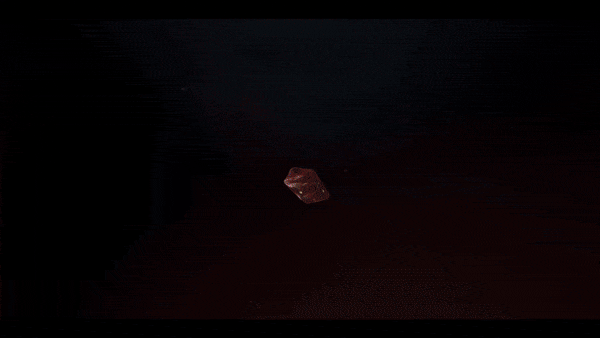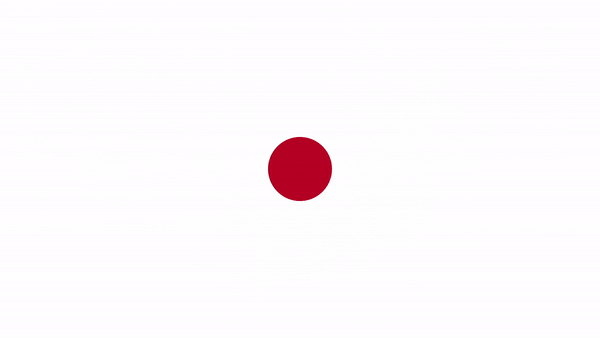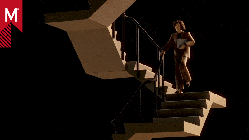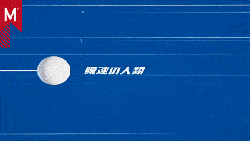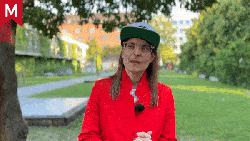Editor’s note: In this Motionographer Guest Post, we are thrilled to bring you some insight from the very talented director and motion designer, Joyce N. Ho. Joyce is a Hong Kong-born Australian designer, now freelancing in NYC. With over 9 years in the industry, she’s developed a love for title design and has had the opportunity to work on and direct a number of titles, most notably The Expanse, Analogue/Digital 2013 (which led to working on True Detective Season 1), and Likeminds. In this article, we get an inside look at her experience taking on the monumental task of creating the 2018 Semi Permanent titles!
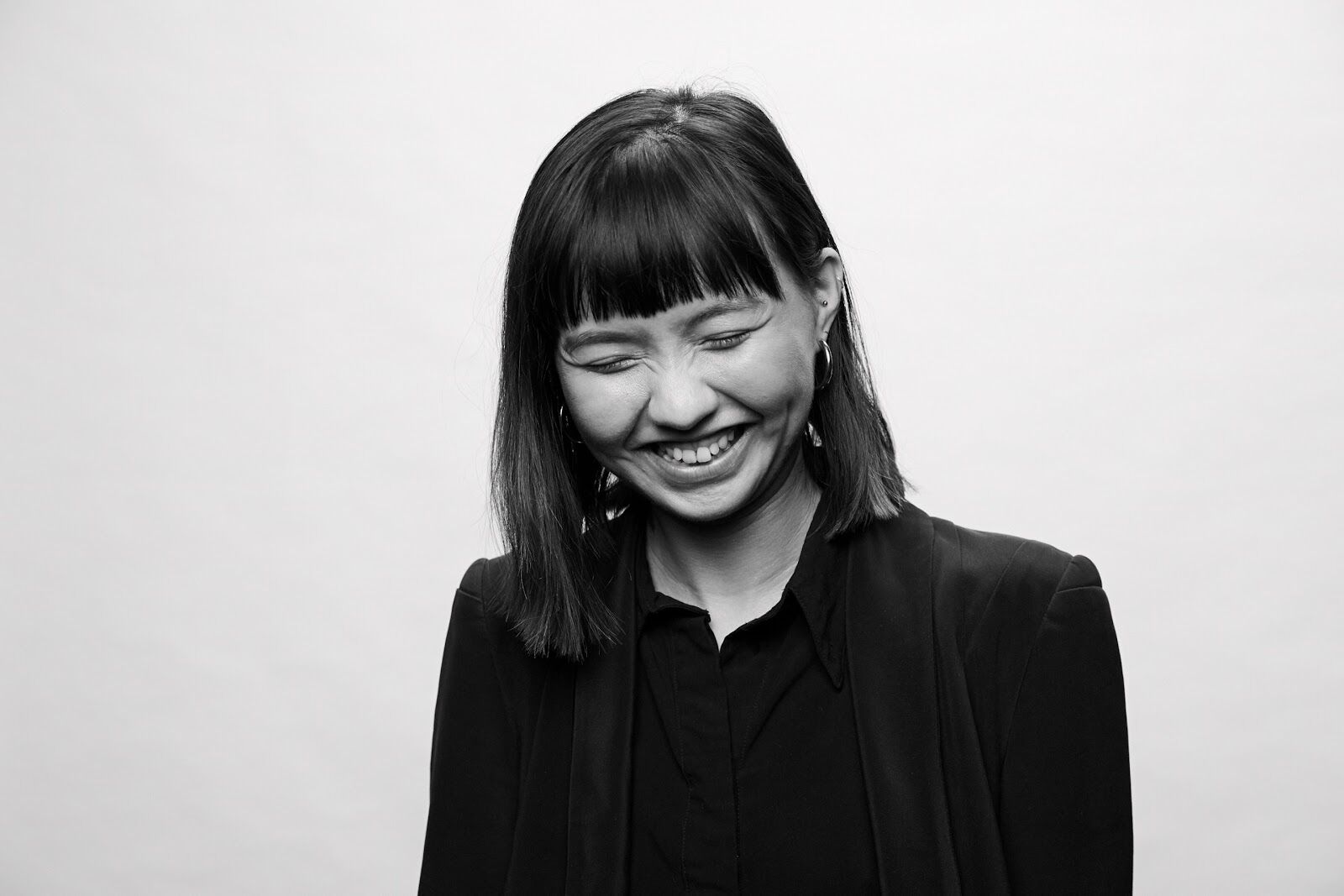
Semi Permanent is the biggest design conference in Australia, and the opening titles have become one of the most anticipated pieces of motion annually, with past designers including the likes of Raoul Marks, Framestore, Filipe Carvalho, MK12, Danny Yount and GMUNK.
This year, I had the amazing opportunity to direct the Semi Permanent titles – a grand collaboration between me and a team of super talented people who I truly admire: Ambrose Yu, Worship (Nicolas Girard & Rafael Ruiz), Nidia Dias, Somei Sun, Joel Watkins, Alex Gee, William Arnold, Mercy Lomelin and Davy Evans. This project felt especially personal because Semi Permanent was the first design conference I ever attended after graduating from university in Australia. It feels full circle and an incredible honor to be able to helm one of my dream projects and also be the first female title designer for the event.
Instead of a behind-the-scenes post on the technical and creative process of the titles, which has been covered extremely well by Semi Permanent (part 1, part 2, part 3 and part 4), I wanted to focus on some core lessons learnt through creating the titles, with a little help from my friends (read: stupidly talented collaborators).

Initial email from SP founder, Murray Bell. (My reaction to this.)
In the past, I’ve often assumed that when people land awesome jobs it’s because it’s just fallen into their laps. Sometimes that’s the case, but I’ve slowly come to realize that it never hurts to put yourself out there and reach out to people. Most humans are lovely and will always appreciate someone taking the time to write to them. Sometimes you might not get a response, but if that’s the worst that can happen, you legit have nothing to lose.
Since I started to freelance, one of my goals was to do a titles project each year. In early 2017, I emailed Murray Bell (founder of Semi Permanent) to introduce myself and let him know that if he was ever looking for a title designer in the next few years, I’d be interested in putting my hat into the ring.
Little did I know, my name had already come up when Murray asked past speakers for title designer recommendations (I’d been recommended by Patrick Clair and Raoul Marks – I think my exact reaction to that was “GET OUT” when I found out a few weeks into production), and later he had stumbled upon my work while doing further research. My email arrived in his inbox not long after. Murray described that as the third sign that I should be the designer for 2018 and emailed me a few weeks after I got in contact. If I hadn’t reached out, who knows if this would have unfolded the way it did!
So if you like someone’s work – send them a friendly email to say just that (hey Dark Igloo, my forever friends for this exact reason!). Maybe you met someone cool out IRL? Get their details and follow up. I met Mercy Lomelin at a meetup and we finally got to work together on these titles. Or is there someone you want to work with? Research exactly who you need to get in contact with and introduce yourself. Go on, slide into their DM’s. But don’t be a creep.
Sometimes you get lucky and an amazing opportunity comes your way, but why wait for that luck to come to you? Be proactive, you never know what might come from it.
Awarded the job, now came my first big hurdle: coming up with the direction. I had a lot of things to consider in my concept: it had to speak to the conference theme of the year ‘creative tension’, not be serious (against my personal style), but rather be playful and excite the audience, and most of all, it was to be a collaborative project. The enormity of the project and tricky brief caused me to put a lot of pressure on myself to come up with the perfect idea. This was also was my first big directorial job not backed by a studio, so I got caught up in thinking my workflow for concepting should be different. So much so, that I ended up giving myself a creative block. When in reality, it was no different to the other titles I’d directed in the past – only except without a studio, I’d have a team of designers working remotely.
It took me a few weeks to realize that the only thing I needed to focus on was answering the brief and that anything else that didn’t aid me in that, was background noise. Of course, that was easier said than done with a high profile project like this, but I tried my best to keep my mind concentrated on the task and treated it like all the other projects I’ve directed before. Eventually, this freed me from my block and I was on my way!
Distractions are, in my experience, no less than the enemy of ambition. Not only do they get in the way of my goals, I often find myself deceived into chasing goals I didn’t even know I had. Social media, notifications, news, advertising… all of it is engineered and incentivised to highjack our attention and make us want what we may not need at that moment. One preemptive strategy I use is to deny distractions of their power over me and to identify in clear terms what I want, what I don’t want and to remind myself often. It doesn’t always work, but it does have the added advantage of clarifying my vision. —Alex Gee, Editor
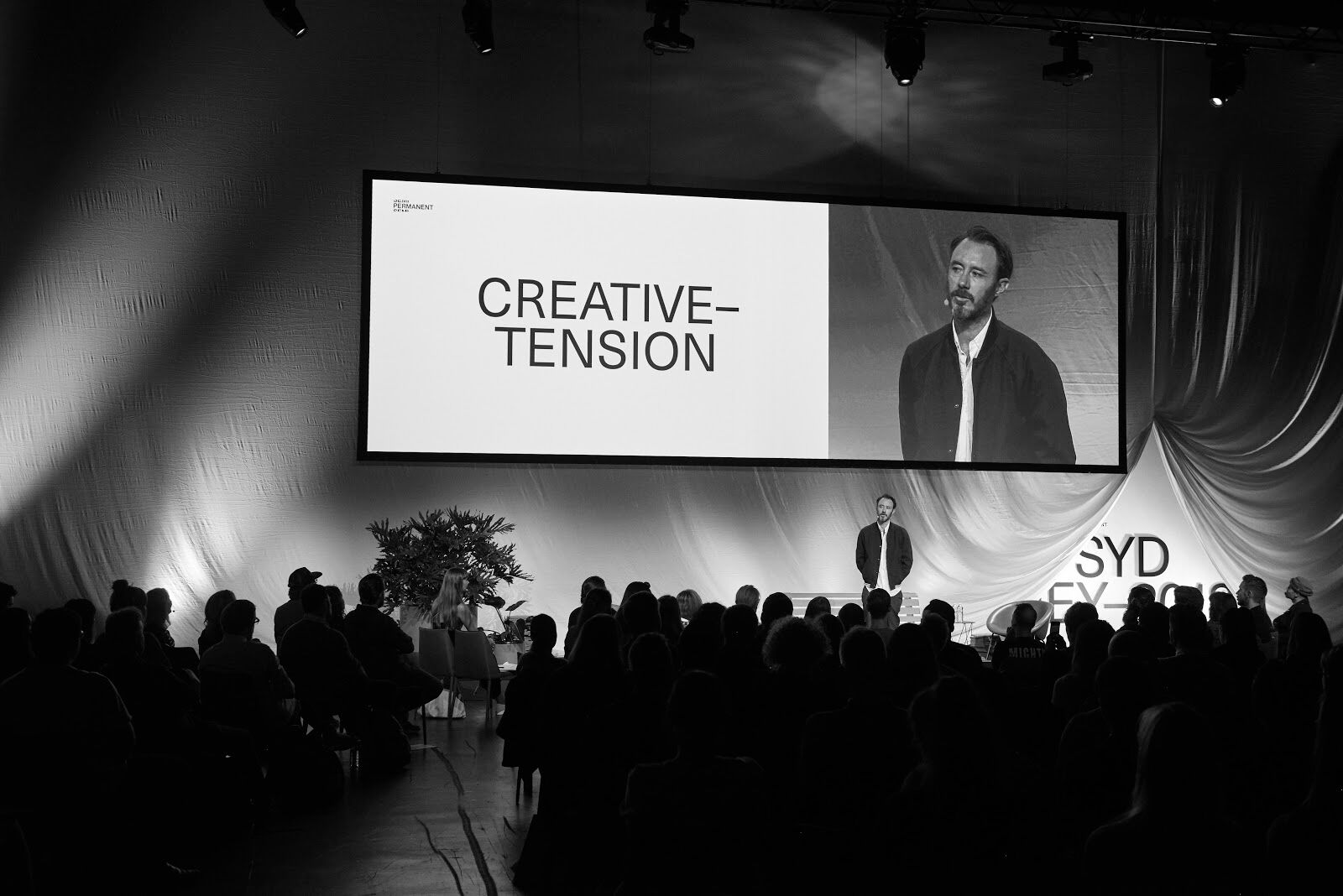
I think distractions have always been more of an emotional, almost self-identity, challenge for me. It’s easy to take the positive responses and twist them into validation. Chasing validation has led me into all kinds of distraction traps like overthinking social media posts, and saying yes to projects I don’t really care about. All are fine, but I always surface from those moments feeling like I’ve lost track of why I got into music—the craft, the process, happy accidents and what the final product can do. So I remind myself why I’m doing what I’m doing, as much as I possibly can. The easiest way is taking myself back to major inspiration moments. For me, those things are playing violin/guitar, listening to Tchaikovsky’s 6th Symphony and watching scenes from Hook (yes, the one from 1991). —Ambrose Yu, Composer
I had an amazing support network throughout this project, and am so appreciative of my team, my two project mentors (Jonathan Kim and Patrick Clair), and my friends and fam. Always reach out for help when you run into trouble because you don’t have to pretend to know everything and you can use it as an opportunity to learn something new from someone who does know what they’re doing.
Your peers
I leaned on my collaborators for both creative and technical support. If you have a team, make full use of everyone’s skills! Even though we were working remotely through Slack, I always felt like I could reach out at any time to ask a question. Not only was everyone freaking talented, but they were all extremely gracious with their expertise.
Even though I hadn’t worked with most of the people on the team, we had each other’s backs because I felt we all shared the same goal of wanting the titles to be the best it could be. I know that goal isn’t shared on every project, so I’m especially thankful towards my collaborators for that.
Your mentor
Because I knew Pat’s and Jonathan’s time was limited due to their busy schedules, when I did ask for guidance, I went to them with very specific questions. We only checked in a handful of times, but I feel what I gained each time was invaluable. It’s important to also seek out guidance early on into a project because chances are someone with more experience than you will flag things that you might not even think of. Pat cautioned me about the chance that people unexpectedly drop out of projects, which didn’t even cross my mind! That exact scenario ended up happening, but it wasn’t the end of the world.
Don’t forget that mentors don’t have to be someone older than you. As long as it’s someone you truly respect and they have experience (or even just a point of view) in something you hunger to learn from, they can make an amazing mentor. Shoutout to my other wise owl, Alex Gee.
Your producer
Wrangling people is difficult. It takes skill, a certain finesse, and most of all, a shitload of time. If I had a chance to do the project again, I’d definitely get a producer onboard as this was an area where I felt out of my depth. This wasn’t a role I’d performed before, and although I’ve had the opportunity to pick up skills and know-how while working in a studio, I should’ve realized early on that I needed a producer. A lot of my time during the middle of production was spent checking in with people and making sure the project was on schedule, which competed with my creative tasks.
My biggest takeaways from producing the titles are:
- set smaller milestones along the way, rather than a big deadline date at the end
- prepare for your worst case scenario so you won’t be blindsided if it happens because you better believe shit will hit the fan. (A producer would’ve noticed the warning signs from the collaborator that dropped out way earlier than I did.)
- the bigger the team, the more time and effort goes into producing.
As it relates to team collaboration, good producing isn’t about giving people tasks and breathing down their necks until they’re done. It’s about working with your team to make sure they understand what their goals are and doing what you can to clear their obstacles. Trust in your team’s ability, it’s why you selected them! I’d say you did a great job on all of that as well. —Greg Benedetto, Producer at Worship
Your loved ones
Technical and creative support is awesome but having emotional support is also so important. This is especially imperative if you are working remotely like I was for this project. Working in front of the computer day in and day out from home, with Slack as my main source of team communication – I found it started to weigh on my mental health. Just being able to share my progress with friends and family outside the project, really helped me work through those feelings of worry. I was able to decompress with them and then move on with a clearer mind.
We need to stay humble and understand that perfection is a very abstract concept. It’s okay to fail, and it’s okay to be in doubt and need help – that’s how we learn, from the mistakes! If we accept that, we are on a very good path to improve ourselves and our work. So, not only do I allow myself to fail, I inevitably end up preferring people to criticise my work than just give me a simple thumbs up, because growth is the most rewarding aspect of it all. And yes, some days you feel bad, and may even feel like an imposter, but those are the times to reach out to friends (which in my case are my cornerstone) and have an open conversation about what troubles you. Putting thoughts into words goes a long way to clear whatever is blocking the mind. —Nidia Dias, Designer
Collaboration has become a double-edged sword. On one side, it’s been painted as the best thing to happen to creativity, and on the other, it’s been marked as a necessary evil. I personally don’t believe in either side of the binary but take it on a case-by-case basis. For some projects, collaboration can be incredibly rewarding, but as with everything in life, it has its challenges.
Semi Permanent was unusual because collaboration was at the very core of the project itself, and everything else was formed around it. It was the very first thing Murray mentioned, even in the first email he sent to me. His brief was constructed with collaboration in mind and so my direction was also created for it. In fact, I ruled out a lot of other ideas if there wasn’t enough freedom needed for collaboration. Even though this project was unconventional, what I learned about collaboration and the challenges that arose seem universal. There were times I compared the workflow between this and my Likeminds titles (which was a one person job), and lamented that collaboration is so much more complicated. But, collaboration became our strength, as with it, comes complexities, resulting in a much richer end result where we utilized everyone’s strengths.
Honesty and a merge of differences
We all know that communication is the most important thing when it comes to collaboration, but knowing that, doesn’t make it easier. People aren’t always going to be speaking the same language as you (quite literally sometimes), or used to the same way that you communicate.
One of the hardest parts of the whole project for me was the direction of the 3D. As an After Effects person, I held onto the belief that for me to be a good director and collaborator for those shots, I had to also speak the language. In the beginning of the project, I was worried about what I perceived as a gap in my skillset, but with the help of my very wise advisors, I eventually let that feeling go because there is absolutely no reason why good collaboration can’t come from a merge of different skills and thinking. In fact, more often than not, that can be used as an advantage to set your project apart from everyone else’s.
In my experience, the more you bring the right people into your create process the better the work will be. As people of craft it can be hard to have a micro and macro lens on the work we are doing. Also there is a lot of different ways to solve a problem and some of the most interesting answers come from combining multiple solutions. —Joel Watkins, Designer & Animator
The music was absolutely key to this collaboration and it became the skeleton on which we created everything around. From my past experiences on titles like Analogue/Digital 2013 and Likeminds, I found it really beneficial to work with the track early on. It’s this symbiotic relationship of being inspired by the music and the music being inspired by the visuals, which is super helpful in creating a piece that truly felt like they were created for each other. The music is the prime example of how great collaboration can span across different skills, mediums, and thinking. Shoutout to my bro Ambrose for nailing the track, and pretty much on the first round!
Getting the music early on was really helpful, it was a very important compass that helped us understand the scope and task at hand. It shaped how we wanted the type to move and progress. As the music crescendos, so do the letters in motion. —Nicolas Girard (Worship), Type Designer & Animator
If you’re collaborating with someone who has a skillset outside your own, my main takeaway is communicating as specifically as you possibly can, but also communicating honestly. Cutting the bullshit and trying to find the common language you both speak is the quickest way to get everyone on the same page. For us, that common language was design. So sketch it out, talk through photos and style frames, and don’t be afraid to say what you need to.
Feedback is also a two-way street. Everyone should feel open to give and receive feedback. And don’t forget positive feedback and compliments are just as important as constructive criticism, if not even more valuable!
Dealing with the unknown
I’m the type of person who lives by a plan and concrete workflow, so dealing with unknowns was particularly stressful. The main hang-up was that although I had an idea of how it would all piece together into a complete project until I actually saw everyone’s respective parts, the exact roadmap was a bit blurry. And as it happens, the best-laid plans often go awry anyway. Due to time and technical constraints, a few of the original ideas had to change, with the outcome developing organically.
We didn’t have an ending to the titles until the second last week of production, so that was a huge unknown right till the end. It was originally going to be an exquisite corpse of the Semi Permanent logo cutting together, but we had to scrap that due to time constraints. But the ending we have now is one of my favorite parts of the whole sequence. Unavoidable things happen, so it’s important not to be too precious about anything. Be open to change, because sometimes the results turn out even better than you plan for.
I don’t think you can ever avoid unknowns in collaboration because working with other people means you’re letting another person take control of that part of the project. To take that control back and therefore solve all the unknowns, means you turn your collaborators into operators of your own vision. And the hard truth is that for good collaboration to happen, you have to let go and trust the people you work with, to encourage them to own their respective part. Trust in their abilities, their process, and their professionalism to deliver. In the end, everyone is also trying to make the work the best it can be.
We rarely admit to others (and ourselves) what we find difficult, which contributes to this perception that everyone else knows what they’re doing and you’re the only person struggling. But it’s so important to pause and reflect on our struggles if we’re to learn from them. I’m a big believer in the idea that if you’re anxious about something it’s because it’s challenging to you in some way and therefore an opportunity to grow.
Directing the Semi Permanent titles was by far the most challenging project I’ve had to tackle in my professional life. It was sometimes overwhelming, revealing insecurities I still have about my skills as a director and designer. At times, I wanted to start over, wishing I had done something easier to execute. But I’ve been told self-doubt comes from the fact that you deeply care about something. And in those times of struggle, it was my mentors who reminded me that no project is ever the be-all and end-all, and that my career was not hanging in the balance with this one project. With that in mind, I focused on what was actually constructive and that was to make my work the best it could possibly be.
Looking back on it all, despite the stress and internal conflict I’ve mentioned above, creating the Semi Permanent titles was creatively fulfilling, and ultimately, personally rewarding. I’m thankful for these moments of pressure because I know I’ve grown into a better director and designer as a result. I have nothing but immense pride for the work we created, because I worked my ass off, tried my damnedest and learned a few lessons along the way. And in the end, that’s all we can strive to do.



